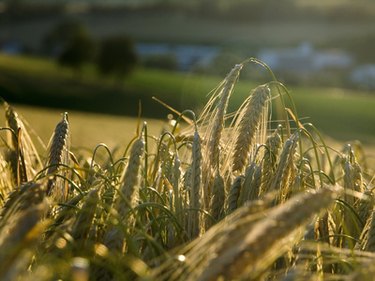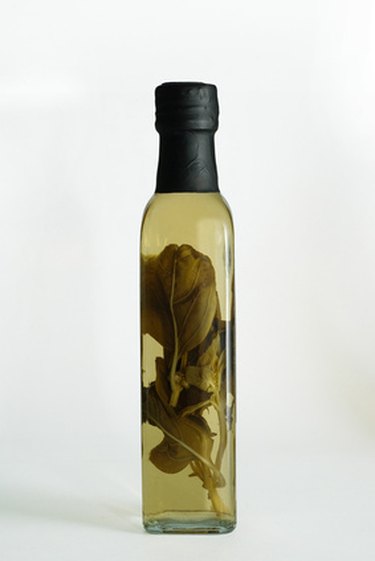
Malt vinegar is produced in a manner similar to that of malt beer. The grain used to make malt vinegar is barley. According to VersatileVinegar.org, the vinegar is put through a fermentation process which softens the grain. The natural enzymes in the grain are what give malt vinegar its unique flavor. Malt vinegar is a versatile item that can be used not only in your kitchen but all around your home.
Condiment
Video of the Day

The most common use of malt vinegar is as a condiment for fish and chips in England, but it has other uses as well. Mixed with oil it makes a flavorful salad dressing. Add herbs to malt vinegar for a stronger alternative to cider vinegar when cooking. According to The Vinegar Book, malt vinegar has a strong flavor but just a medium level of acidity.
Video of the Day
Pickling
According to The Vinegar Book, malt vinegar is good for pickling. The acid in the vinegar is what's needed to pickle foods. The flavor of the vinegar does make a difference in the initial preparation. It is especially useful in pickling walnut pickles, according to VersatileVinegar.org. Also, most recipes in England that call for using pickling vinegar are referring to malt vinegar, while here in the States we use either white or cider vinegar for pickling.
Cleaning Solution
Malt vinegar has many cleaning uses, according to iVillage.co.uk. One suggested use is to treat lime scale. To remove lime scale from pipes, soak an old towel in malt vinegar, wrap the towel around the pipe and cover with plastic; leave on for 24 hours. The lime scale should come right off. To clean out a plugged sink, pour baking soda down the drain, then pour down a quart of malt vinegar. Wait about two hours, then plunge it. Another cleaning trick is to make a paste of malt vinegar and baking soda, apply to your grill and leave on overnight; it should wipe off clean in the morning.